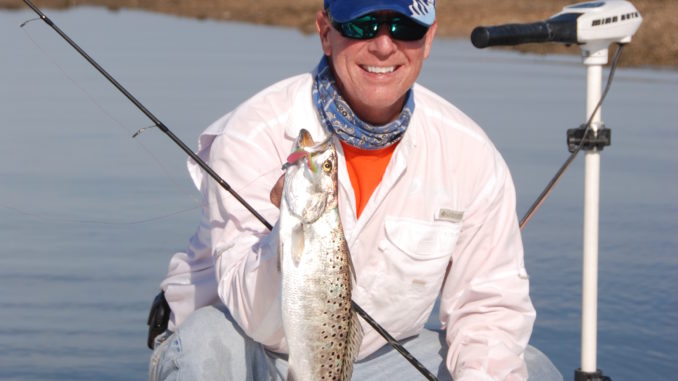
Bulls Bay is known for shrimp and trout, and both show up in September.
The conversation came real easy, as it does after a great day on the water when you’ve figured out what the fish wanted and have given it to them. Johnny Spitzmiller of Ambush Inshore Charters was having just that sort of conversation at the lunch counter of Sewee Outpost in Awendaw.
The day had started early at Garris Landing on Bulls Bay. Spitzmiller and his party had caught the tide just right, working the incoming water through full, then halfway back out with just enough left to run back across the bay, load the boat and head back out to the highway for lunch.
The day’s target had been speckled trout, because beginning in September, cooling water temperatures and tons of brown shrimp invade Bulls Bay, and with them come the trout.
South Carolina opens its shrimp-baiting season in September; Bulls Bay is a prime target for many shrimp baiters, and Spitzmiller said the shrimping activity also has a positive effect on the speckled trout bite.
“Shrimp-baiting season opens about September 9 or 10, and during that same time, the trout bite starts to get hot and heavy,” Spitzmiller said. “The water starts to cool off; there is plenty of bait in the creeks, the shrimp are bigger and the trout are after them. It’s as simple as that.”
It’s not that shrimp and speckled trout can’t be found in other Lowcountry areas, but Spitzmiller said that Bulls Bay is a tremendous trout factory, producing bigger fish than he sees in other locations.
“You’ll catch more solid fish in Bull’s Bay — you’ll catch more 20 inch fish. Compare that to the Wando River, where the average trout is 13 ½ inches,” he said. “I believe the trout get bigger here because the fishery is right on the Atlantic Ocean, and you’ve got bigger fish because of the proximity to the big water.
“The whole area is a big shallow flat, marked by a couple of big creeks and some smaller access ways. The best fishing will be near any of the channels that feed into Bulls Bay, either from the ocean or from the inland waterway. We’re talking about Anderson Creek, Bull Creek, Vanderhorst Creek and Awendaw Creek.”
According to Spitzmiller, it’s important to pay attention to the shoreline you’re fishing. He suggests looking for points, oyster points, grass points and any location where there’s water coming in or going out, places he describes as ditches.
“Trout love those quick transitions where the water goes from 12 to four feet,” he said. “Look for oyster fingers with that kind of water and fish those points. Trout are going to be where there is running water. They’ll be in water as shallow as two feet. If you’re got a little bit of a breeze blowing onto a point, it’ll blow bait up onto a point. That’s another indicator to look for.”
Though the fall trout bite often coordinates with the calendar, of more importance to Spitzmiller is when the water temperature falls into the mid- to upper-70s. He said the best bite will last until the water temperature drops into the mid-60s, after which he generally finds he has to fish a little bit deeper and a little bit slower. The fish tend to be the most active with the water temperature between 65 and 75.
Bulls Bay has a reputation for shallow water that tends to spook some anglers in terms of navigation and the possibility of being left high and dry when the tide recedes. For this reason, Spitzmiller suggests fishing from the mid-incoming to the mid-outgoing tide.
“You don’t want to be out on a flat three hours on either side of low tide,” he said. “You want to do your trout fishing the three hours on either side of high tide. Before that, you won’t have enough water. You’re going to get hung on oysters, you’re going to get your boat hung up or worse. There’s just not enough water.”
From late August and into September, Spitzmiller catches plenty of trout on topwater plugs early in the morning; his favorite topwater bait is a Zara Spook. As the day wears on, he’s always got a live shrimp or artificial like a D.O.A. shrimp tied on below a popping cork. On outings that keep him on the water through mid-day, the fish tend to back off a little, and he prefers go to a straight grub. If forced to choose between live or plastic, he says artificials are the way to go.
“When you’re casting for trout with a D.O.A. under a popping cork, you’re going to get just as much action as you would a live shrimp, and you don’t have to worry about re-baiting every cast,” he said, “or the shrimp getting thrown off or dying.”
Spitzmiller decides what color baits to throw based on the water clarity. Being shallow, wind, tide and time of year will dictate water clarity in Bulls Bay and accordingly, what baits trout will see and react to the best.
“I always try to match the colors with what’s going on with the water color,” he said. “ If you’ve got muddy water, you want to use brighter baits. If you’ve got clear water, you want to use a clear bait. The Electric Chicken color DOA is good for muddy water. A natural or clear sparkle is best for clear water.”
Spitzmiller had some advice about fishing the bay based on wind direction. With the whole north and east side of the bay open to the ocean, wind direction can make a big difference.
“The best wind to fish Bulls Bay is a westerly or southerly wind; you’ve got protection on the north end of Bull Island,” he said. “If the wind is forecast to be from the east or north, you don’t even want to go to Bulls Bay. You’ve got waves coming right in off the ocean, plus, the water’s going to be muddy. With as little as five miles an hour from the north, it’s going to get too choppy in there and too muddy to see.”
Brooks Geer, the owner and proprietor of Sewee Outpost, is no stranger to the business end of a fishing rod, especially where speckled trout are concerned. Whenever possible, Geer will sneak off to tangle with the trout in Bulls Bay, which is directly behind his store as the crow flies.
“Garris Landing on Sewee Road is the closest to us, and it is a fine launch site, but it closes at 9 o’clock,” he said. “It does not have a floating dock for loading and unloading, and it is really shallow at low tide, so you are somewhat restricted on what size boat you can launch there. I find that if you’ve got time, Buck Hall is the easiest landing to access Bulls Bay. It’s just at the north end of Bulls Bay while Garris is at the south end of Bulls Bay.”
Either north or south, Geer said the bay fishes pretty similar.
“I fish on the south end more because I can get on the water quicker,” said Geer. “
Success-wise, there might be more possibilities on the north end of Bulls Bay as far as different structures and bigger areas, but the best fishing will still be around long grassy points, oyster beds, and even a few of the boat docks that line the intercoastal.”
DESTINATION INFORMATION
HOW TO GET THERE/WHEN TO GO — Bulls Bays is five miles east of Awendaw off of US 17, about midway between Charleston and Georgetown. The public ramp on the north end of Bulls Bay is Buck Hall Landing at the end of Buck Hall Landing Rd., inside Buck Hall Recreation Area. Garris Landing is on the south end of Bulls Bay off Sewee Rd. Trout fishing picks up after Labor Day and stays good through October, until the water temperature drops into the low 60s.
BEST TACTICS — Anglers may have better success matching the hatch for speckled trout by using live shrimp under a popping cork around long points and oyster shells that skirt the edge of a channel or drop off. Later, artificial baits such as D.O.A. shrimp or plastic grubs produce better and are less hassle than live bait. One key to fishing Bulls Bay is to launch halfway through the incoming tide and fish through high tide and back down the top half of the outgoing. By mid-tide anglers who elect to keep fishing need to stay in the main creeks to keep from being stranded in shallow water.
ACCOMMODATIONS — Charleston Area Convention and Visitor Bureau, 843-853-8000, www.charlestoncvb.com.
FISHING INFO/GUIDES — Johnny Spitzmiller, 843-860-4487, www.ambushinshorecharters.com; Tom Siwarski, Carolina Aero Marine Adventures, 843-327-3434; Sewee Outpost, 4853 U.S. 17, Awendaw, 843-928-3493, www.seeweeoutpost.com.
MAPS — Delorme South Carolina Atlas & Gazetteer, 800-561-5105; www.delorme.com; Capt. Segull’s Nautical Charts, 888-473-4855, www.captainsegullcharts.com; Sealake Fishing Guides, 800-411-0185, www.thegoodspots.com.

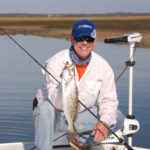
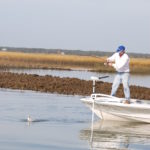

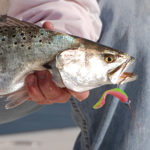
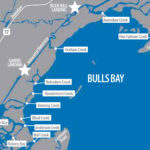




Be the first to comment